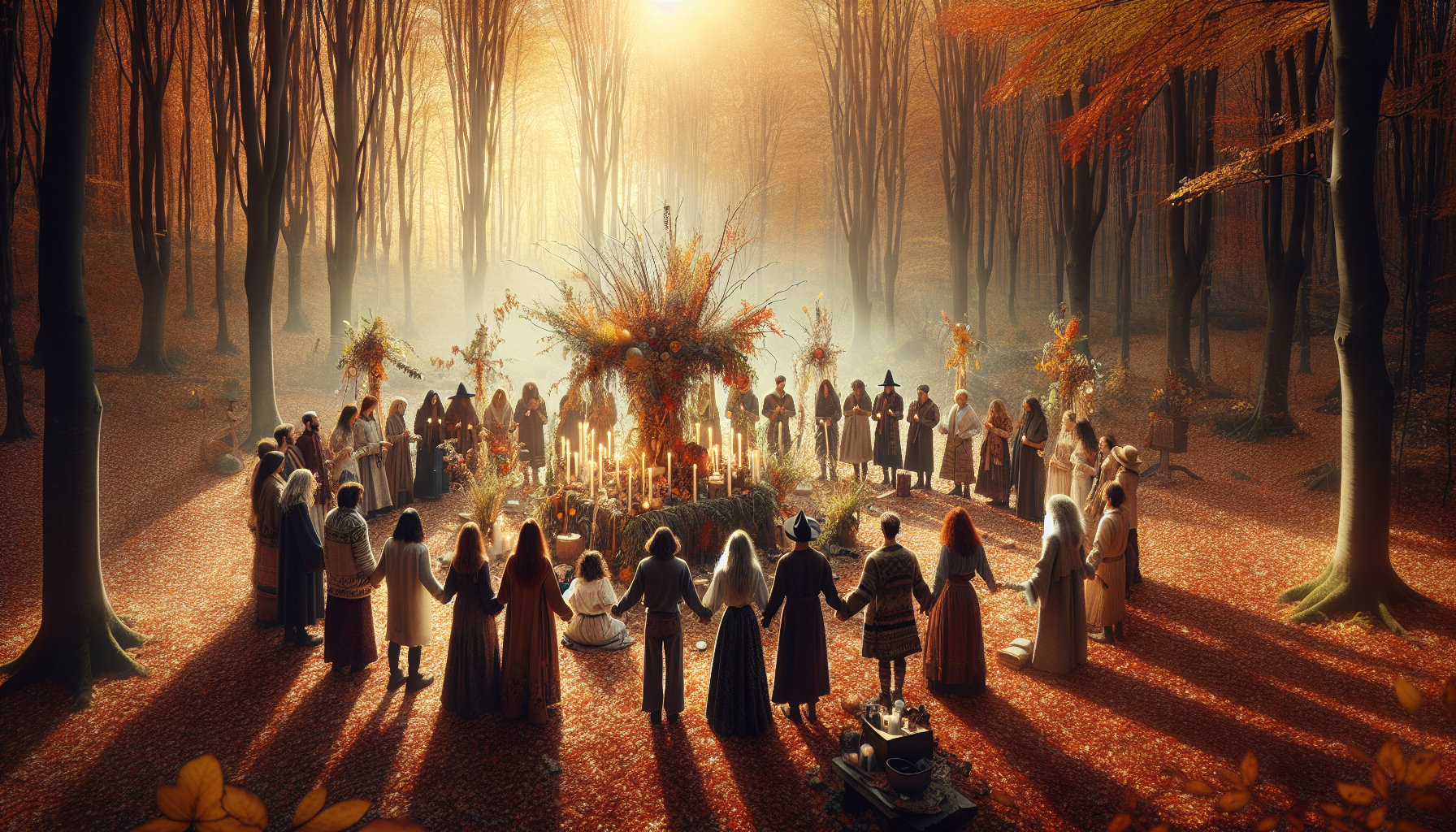In the bustling cacophony of modern life, where notifications ping incessantly and the pace of daily existence races like a relentless river, finding moments of tranquility can seem like a distant dream. Yet, nestled within the heart of this whirlwind lies a serene oasis, a timeless practice that whispers peace to all who seek its embrace: Zen Buddhism. At the intersection of mindfulness and nature, Zen Buddhism offers a unique path to inner peace through the concept of “talking gardens.” These gardens are more than mere collections of flora; they are living dialogues between nature and human consciousness, designed to evoke harmony and reflection. 🌸
The art of Zen gardening is steeped in tradition, rooted in the desire to create spaces that inspire contemplation and enlightenment. These gardens are meticulously crafted to represent a microcosm of the natural world, utilizing elements like rocks, water, and plants to symbolize larger universal concepts. As we explore the tranquility of Zen gardens, we delve into the philosophy that underpins them—how every stone, every ripple in the water, every carefully raked line in the sand speaks a language of its own, inviting us to pause, breathe, and listen. This article, “Harmony in Bloom: Exploring the Tranquility of Zen Buddhism Through Talking Gardens,” invites you on a journey through these serene landscapes, where each garden tells a story and offers a lesson in the art of being present.
Our exploration will begin with the historical roots of Zen Buddhism and its migration from China to Japan, where it blossomed into a distinctive practice intertwined with the natural environment. We’ll uncover how these gardens serve as a canvas for the Zen principles of simplicity, asymmetry, and naturalness, each aspect meticulously designed to prompt introspection and inner peace. Through the lens of Zen, a garden becomes more than a space—it transforms into a living meditation, where the arrangement of elements encourages a state of mindfulness and a deeper connection to the present moment.
As we wander through the paths of these talking gardens, we’ll examine the role of key components such as the karesansui (dry landscape), which utilizes rocks and sand to represent water and mountains, creating a tranquil scene that encourages contemplation. The interplay between space and silence, the significance of moss-covered stones, and the placement of stepping stones—all serve to guide the visitor through a journey of self-discovery. These elements are not random; they are intentional acts of creation, designed to mirror the viewer’s inner landscape and foster a dialogue between the external environment and the inner self.
In the final leg of our journey, we’ll connect these ancient practices to the modern world, exploring how the principles of Zen gardening can be applied to our daily lives. Whether you are an urban dweller seeking a slice of nature in a concrete jungle, or someone with a sprawling backyard eager to cultivate a space of reflection, the essence of Zen gardening holds valuable lessons for us all. Through mindfulness and intentionality, we can create our own sanctuaries of peace, no matter where we are. So, let us embark on this exploration of harmony in bloom, where each garden serves as a gentle reminder of the beauty and tranquility that can be found when we open our hearts and minds to the whispers of nature. 🍃
The Philosophy of Zen Buddhism: A Journey Through Time
Zen Buddhism, often known for its tranquil practices and profound teachings, has captivated countless individuals worldwide. Its roots stretch back to ancient India, where the foundational concepts of Buddhism began. As these teachings traveled to China, they evolved into what is now recognized as Zen. The term “Zen” is derived from the Japanese pronunciation of the Chinese word “Chán,” which in turn traces back to the Sanskrit term “Dhyana,” meaning meditation. This lineage underscores the meditative core of Zen Buddhism, highlighting the importance of mindfulness and awareness in daily life.
Zen Buddhism emphasizes direct experience over theoretical knowledge. Unlike other religious traditions that may focus heavily on scriptures and rituals, Zen encourages practitioners to look within themselves to discover enlightenment. This introspective approach aligns with the concept of “Satori,” or sudden enlightenment, a pivotal goal in Zen practice. Through meditation, koans (paradoxical anecdotes or riddles), and mindful living, Zen practitioners strive to achieve a deeper understanding of themselves and the universe.
As Zen spread to Japan, it began to intertwine with the culture, influencing art, garden design, and even martial arts. The simplicity and elegance of Zen can be observed in various Japanese traditions, from the minimalist aesthetics of a tea ceremony to the deliberate arrangement of rocks and sand in Zen gardens. This cultural integration has not only preserved Zen teachings but also enriched them, offering a unique perspective on achieving harmony and balance in life.
The Essence of Zen Gardens
Zen gardens, also known as karesansui or dry landscape gardens, are a quintessential expression of Zen Buddhism. These gardens are meticulously designed to reflect the beauty and tranquility of nature, utilizing rocks, gravel, sand, and carefully pruned plants to create a serene space for contemplation. Each element in a Zen garden is thoughtfully placed to symbolize different aspects of nature and the human experience.
One of the key features of a Zen garden is its simplicity. The use of minimal elements serves to focus the observer’s mind, encouraging a sense of peace and clarity. The raked gravel or sand often represents water, while the rocks can symbolize islands, mountains, or living beings. This abstraction allows for a personal interpretation, inviting individuals to reflect on their own thoughts and emotions.
Creating a Zen garden involves more than just physical design; it is an act of meditation in itself. The process of arranging elements and maintaining the garden requires mindfulness and patience, embodying the principles of Zen. For those looking to cultivate their own Zen garden, it is essential to approach the task with an open mind and a willingness to explore one’s inner landscape.
Designing Your Own Zen Garden
Designing a Zen garden at home can be a fulfilling endeavor, offering a peaceful retreat from the chaos of modern life. To create your own Zen garden, it’s crucial to understand the key elements that contribute to its serene ambiance. A well-crafted Zen garden is not just a visual delight but also a spiritual sanctuary, providing a space for meditation and reflection.
Start by selecting a suitable location. A quiet corner in your backyard or a small section of your front yard can serve as the perfect spot. The size of the garden doesn’t matter as much as the intention behind it. Whether it’s a sprawling landscape or a miniature tabletop version, the principles remain the same.
Once you’ve chosen the location, begin by sketching out a rough design. Consider incorporating elements like rocks, gravel, and sand. These materials are central to a Zen garden, each holding symbolic significance. The placement of rocks should mimic natural formations, evoking a sense of nature’s artistry. Gravel and sand can be raked into patterns, symbolizing rippling water or gentle waves.
| Element | Symbolism |
|---|---|
| Rocks | Mountains, stability, contemplation |
| Sand/Gravel | Water, tranquility, flow of life |
| Plants | Growth, harmony, life’s cycle |
Incorporate plants sparingly, choosing species that thrive in your climate. Moss, bamboo, and evergreen shrubs are popular choices, offering a touch of greenery without overwhelming the simplicity of the garden. Remember, a Zen garden is about finding balance and maintaining an uncluttered, harmonious environment.
The Meditative Art of Zen Gardening
The practice of Zen gardening is deeply meditative, inviting individuals to engage with the present moment. As you arrange the garden, pay attention to the sensations of touch and sound. Feel the texture of the sand as you rake it into patterns, and listen to the soothing sound of gravel underfoot. These sensory experiences can help ground you in the now, fostering a sense of inner peace.
Maintaining a Zen garden is an ongoing journey, much like the path to enlightenment. Regularly tending to the garden offers opportunities for mindfulness and reflection. As you prune plants or rearrange rocks, consider how the changes in the garden mirror shifts in your own life. This practice encourages a harmonious relationship between nature and the self, aligning with the core tenets of Zen Buddhism.
For inspiration and practical guidance on Zen gardening, watch the video below from the channel “Serene Spaces”: Zen Garden Basics by Serene Spaces. This video provides an insightful overview of the design process and the philosophical principles behind Zen gardens. 🪴
The Impact of Zen on Modern Life
In today’s fast-paced world, the teachings of Zen Buddhism offer a much-needed respite from the constant hustle and bustle. By embracing Zen principles, individuals can cultivate a sense of calm and clarity, enhancing both mental and physical well-being. The practice of mindfulness, central to Zen, encourages living in the moment and appreciating the beauty of everyday experiences.
Zen Buddhism’s emphasis on simplicity and minimalism resonates with many contemporary movements, such as minimalism and mindfulness-based stress reduction. These approaches prioritize decluttering one’s environment and mind, fostering a more intentional and fulfilling way of life. By letting go of unnecessary distractions and focusing on what truly matters, individuals can achieve a greater sense of contentment and purpose.
Moreover, the meditative practices of Zen, such as Zazen (seated meditation) and mindful breathing, have been shown to reduce stress, improve concentration, and enhance emotional resilience. As scientific research continues to explore the benefits of meditation, more people are turning to Zen for its practical and transformative techniques.
Zen in Art and Culture
Zen Buddhism’s influence extends beyond personal well-being, leaving a lasting impact on art and culture. In the realm of visual arts, the principles of Zen are evident in the works of artists who emphasize simplicity, balance, and harmony. The use of negative space, or “Ma,” is a common theme, inviting viewers to engage with the artwork’s emptiness as much as its form.
Zen also plays a significant role in performing arts, such as tea ceremonies, calligraphy, and martial arts. These practices are not merely artistic expressions but also meditative disciplines, each offering a unique path to self-discovery and enlightenment. By engaging in these activities, practitioners embody the Zen ideals of presence, focus, and mastery over one’s actions.
As Zen Buddhism continues to inspire individuals across the globe, its teachings offer valuable insights into living a balanced and harmonious life. Whether through the tranquility of a Zen garden or the meditative practice of Zazen, the principles of Zen provide timeless guidance in navigating the complexities of modern existence.

Conclusion
Conclusion: Harmony in Bloom: Exploring the Tranquility of Zen Buddhism Through Talking Gardens
As we conclude our exploration of Zen Buddhism through the enchanting lens of talking gardens, it is essential to reflect on the profound insights we’ve uncovered. Zen Buddhism, with its roots deeply embedded in simplicity, mindfulness, and the beauty of nature, offers a timeless guide for finding peace and tranquility in our fast-paced modern world. The concept of talking gardens exemplifies this philosophy by inviting individuals to engage with nature in a manner that is both contemplative and interactive.
Throughout our journey, we delved into the historical and cultural significance of Zen gardens, uncovering their origins in ancient Japan and their evolution as spaces of meditation and reflection. These gardens, often characterized by meticulously arranged rocks, sand, and carefully pruned plants, serve as metaphors for the Zen principles of harmony, impermanence, and interconnectedness. They encourage us to pause, breathe, and appreciate the subtle beauty that surrounds us.
One of the key themes we explored is the art of mindfulness that talking gardens inspire. In a world where distractions abound, these serene spaces remind us of the importance of being present in the moment. The gentle rustle of leaves, the trickling of water, and the play of sunlight on stone all become part of a symphony that speaks to the soul. By cultivating mindfulness in these gardens, we learn to carry that sense of presence into our daily lives, enriching our interactions with others and enhancing our overall well-being.
Moreover, we examined the role of talking gardens as facilitators of dialogue between nature and humanity. These gardens are not just passive spaces; they invite active participation. Visitors are encouraged to walk the paths, rake the gravel, and engage with the elements. This interaction fosters a deeper connection with nature, promoting an understanding of our place within the natural world. In doing so, talking gardens serve as a gentle reminder of our responsibility to nurture and protect the environment.
The therapeutic benefits of Zen gardens were also highlighted, emphasizing their potential to reduce stress, anxiety, and depression. Studies have shown that spending time in nature can have a profound impact on mental health, and Zen gardens, with their deliberate design and calming aesthetics, offer a sanctuary for those seeking solace and rejuvenation. By embracing the principles of Zen Buddhism, we can find a sense of inner peace and resilience in the face of life’s challenges.
Furthermore, our exploration revealed the adaptability of Zen garden principles to various cultural contexts. While deeply rooted in Japanese tradition, the concepts of simplicity, balance, and harmony resonate universally. As such, talking gardens have found their way into diverse environments, from corporate offices seeking to enhance employee well-being to urban spaces providing a green oasis amidst the hustle and bustle. This adaptability underscores the timeless relevance of Zen teachings in promoting harmony and balance in any setting.
In reinforcing the importance of this theme, we must acknowledge the transformative potential of integrating Zen principles into our lives. In a world that often prioritizes speed and productivity over reflection and mindfulness, the wisdom of Zen Buddhism offers a valuable counterbalance. By embracing the tranquility of talking gardens, we open ourselves to a more harmonious existence—one that values connection, simplicity, and inner peace.
As you reflect on the insights shared in this article, I invite you to consider how you might incorporate the principles of Zen and the serenity of talking gardens into your own life. Whether through creating a small Zen-inspired corner in your home, visiting a local garden, or simply practicing mindfulness in your daily routine, there are countless ways to bring the tranquility of Zen Buddhism into your everyday experience.
I encourage you to share your thoughts and experiences in the comments section below. How have Zen principles or talking gardens impacted your life? What steps will you take to cultivate harmony and mindfulness in your surroundings? By engaging in this dialogue, we can inspire and support one another on our journeys toward greater peace and balance.
Finally, I urge you to share this article with others who might benefit from its insights. In a world that is constantly changing, the timeless teachings of Zen Buddhism offer a beacon of stability and calm. By spreading this message, we can create a ripple effect, encouraging more individuals to embrace the tranquility of talking gardens and the wisdom they impart.
In closing, may the harmony and beauty of Zen gardens inspire you to find peace within yourself and in the world around you. 🌿 Let us walk this path together, nurturing both our inner gardens and the natural world that sustains us.
Gabriel is a visual storyteller and symbolic naturalist whose creations explore the veiled ecologies and ancestral ties between humans and the living world, as echoed through myth and memory. With a sensitivity attuned to the sacred, Gabriel unveils the ancient choreography of plant, animal, and spirit — a realm where forests spoke in signs, rivers kept secrets, and every flower bore a forgotten name.
His path winds through the esoteric — tracing the rituals of forest sages, the herbal codes of ancestral healers, and the silent agreements that once guided human life in deep reciprocity with nature. From moss-covered shrines to twilight groves, Gabriel’s work reveals relationships once vital, now buried beneath layers of modern detachment.
With a foundation in visual design and the aesthetics of ancestral wisdom, Gabriel weaves storytelling into sacred ecology. His work doesn’t just depict — it channels. Drawing from myth, mysticism, and lost herbal traditions, he crafts images and narratives that pulse with the old knowing: that nature is not scenery, but kin and teacher.
Through collections of symbolic visuals, myth-rooted studies, and intuitive reflections, Gabriel invites others to rekindle forgotten senses — to listen not only with ears, but with intuition, memory, and reverence.
His work is a tribute to:
-
The mythic language of trees, stones, and roots
-
Forgotten pacts between healers and the wild
-
The sacred intelligence in nature’s unseen patterns
Whether you walk with the lore of plants, dream with the rhythms of the earth, or simply feel the call of something older in the wind through the leaves, Gabriel welcomes you into a space where symbolism, spirit, and wild nature entwine — one myth, one leaf, one vision at a time.





